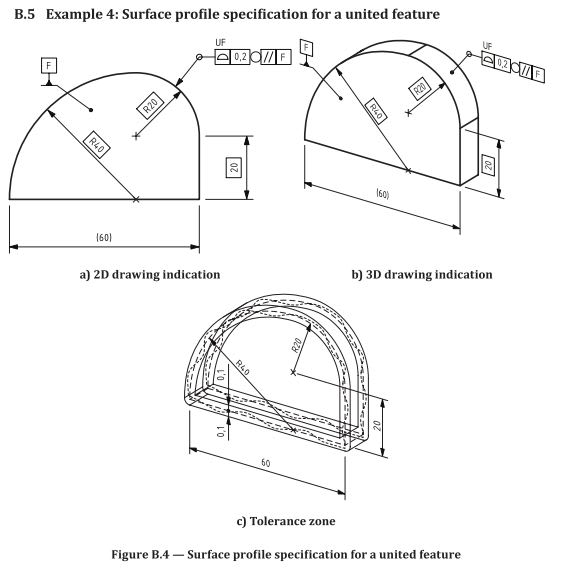"It only indicates which surfaces are controlled for by the tolerance" sounds like a grouping operator.
"the limiting zones can be disjointed (controlling each surface's form separately)" sounds like a random and not useful rule from ISO. Like, here are 4 contiguous surfaces, but "all around" means they can fly off into space regardless. Seems handy and would enjoy seeing an example where that was the preferred solution.
----
"as to which 4 outer walls of the block"
So, it could mean front, right, top and left sides? Sounds like Picasso has been doing profile portraits. What makes sense for that is to drop the word "profile" and replace it with "surface" so that it no longer carries the projection connotation that all other uses of the word "profile" have in geometry.
"Neither the all around symbol nor the collection plane indicator is the tolerance zone grouping mechanism in ISO. In frequent cases, even the existence of datums may not be enough to group the tolerance zones entirely."
That part makes sense. Because why, on a single part, would the surfaces of the part ever be held in relation to one another? That's completely insane. /s
Multiple surfaces tied together by nominal topology and basic dimensions are free to float away from one another? Does this in some way mimic the way an actual part, pulled from its box acts on the way into an assembly? If not why would one chose otherwise?
I thought Europe was a leader in removing lead pipe from the water supply.
Anyway, it appears that the obvious solution of using the word "group" and then the type of group would help, but maybe not. Everyone would then argue what the word "group" meant; probably deteriorating into features, surfaces, and derived geometry with no relation to each other at all until some more complicated phrasing was added.
"The surfaces identified as "A" (that is using the glyph that correspond to the "A" character as defined in the ASCII symbol list by placing the "A" glyph with a leader to the surface or terminating within the projected boundary of the surface in the view or directly on the surface as viewed in the model) are considered to be a group for topological purposes but not for GPS constraint purposes."
Nope. Still too ambiguous. Needs to be longer.

